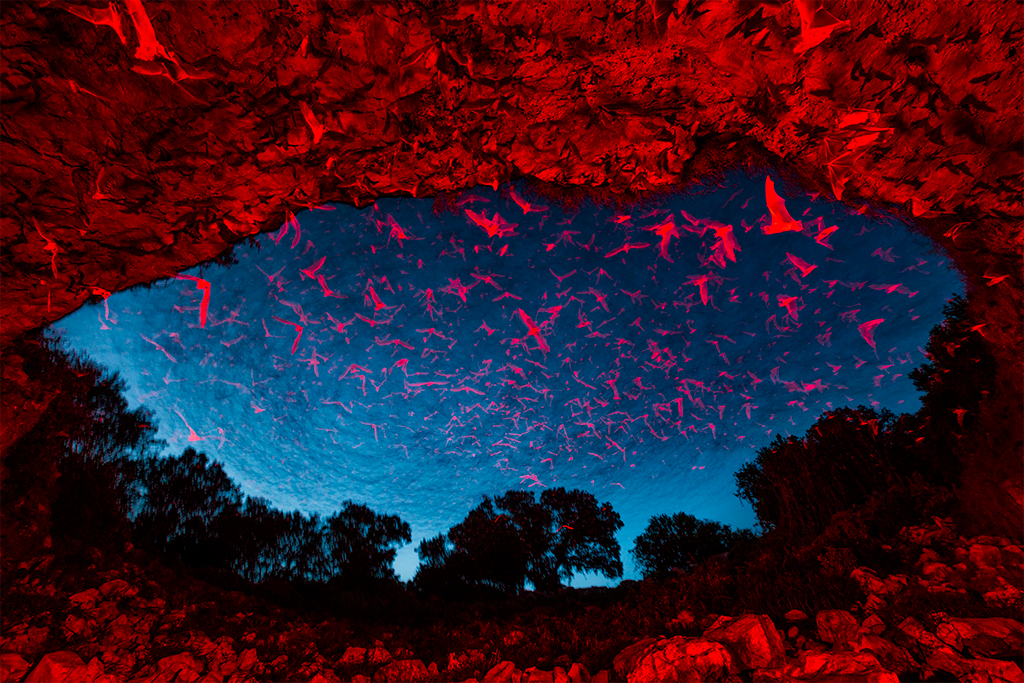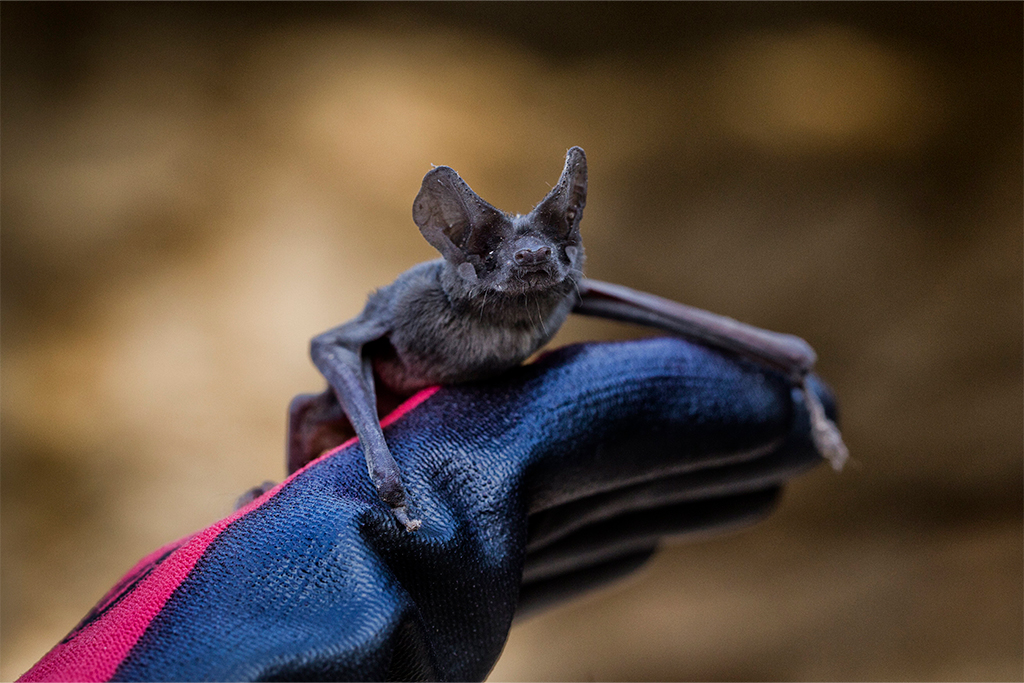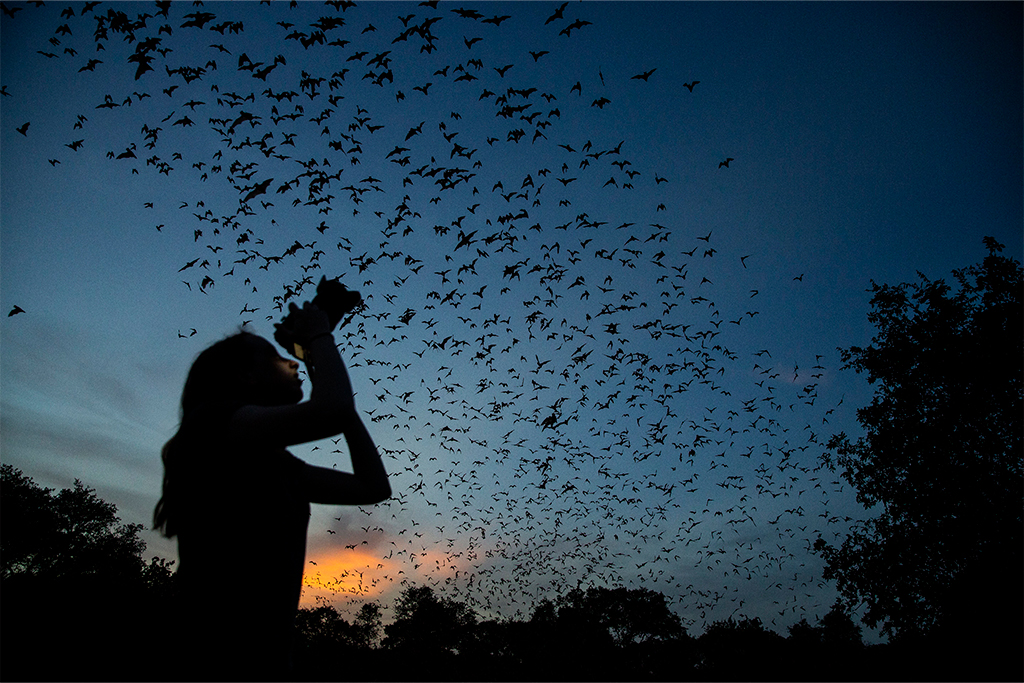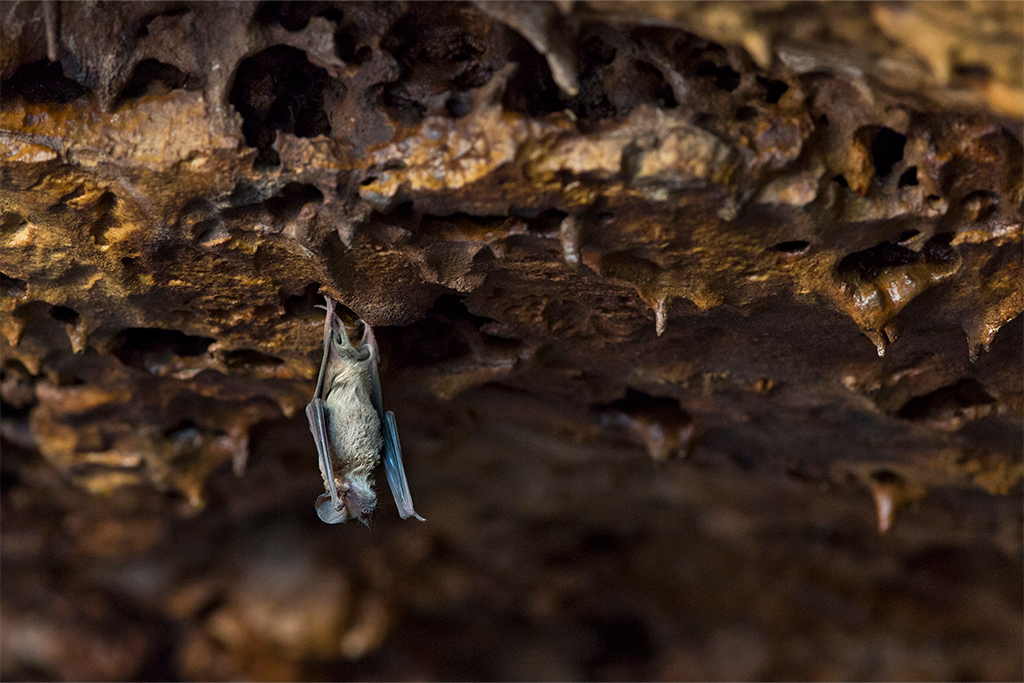Inside the World’s Largest Bat Colony
The sun was just beginning to drop below the horizon when Karine Aigner approached Bracken Cave. Aigner, a wildlife photographer who’s worked for National Geographic, was there to witness a spectacle that takes place nearly every night between May and September at the discreet spot about 30 miles northeast of San Antonio. Each summer, around 15 million Mexican free-tailed bats find their way to this cave in the Texas Hill Country where they roost, making Bracken Cave the largest-known concentration of bats on the planet.
The show starts with a trickle, becomes a cloud, and then climaxes with a flood of black bats flickering out from the dark reaches of the cave in a circular vortex that helps push the colony up and out.
“You feel the wind go by you,” Aigner says. “It’s pretty incredible. As photographers, we’re always looking for the more intimate pictures that put us in situations that not everyone is able to experience. Those are the perks of the job.”
Aigner was invited to photograph the cave by Fran Hutchins, director of Bat Conservation International’s (BCI) Bracken Cave Preserve. BCI is based in Austin but works to protect bats all over the globe — important work at a time when bats and their habitats are facing more threats than ever. At Bracken Cave, for instance, encroaching development and the spread of pesticides have threatened the population. These hazards inspired Hutchins to ask Aigner to help capture the incredible secret show these bats perform each summer and help bring awareness to their species’ plight.

Bats’ Bad Rap
Bats are often associated with bloodsucking vampires and, more recently, the spread of animal-borne viruses. What bats aren’t often credited for is their magnificent beauty. Aigner’s photography shows a sky dotted with the tiny creatures. The images capture a sense of movement, a nocturnal ballet of lithe, furtive dancers on the hunt.
A bat’s menu is one of their major benefits to the ecosystem. Bats consume enormous numbers of moths, beetles, flies, wasps, mosquitos, and other insects. By some estimates, healthy bat colonies can consume upward of 250 tons of insects each night, playing a significant role in managing insect populations that damage crops and plants, spread diseases, and harm humans.
“They help us by doing that, because they control certain crop raiders,” Aigner says. “They really are a good cleanup crew.”

Bats Under Threat
Because of a bat’s diet, pesticides pose a particular threat to colonies — by eradicating their food source. Another new threat to bat populations is white-nose syndrome, a fungal disease that has killed off 90% of northern long-eared bat, little brown bat, & tricolored bat populations in fewer than 10 years. The fungus grows on bats’ skin during hibernation and causes dehydration, starvation, and death. It is widespread in areas of North America with colder temperatures, and there is no known cure. Organizations like BCI have been working with a wide network of conservation agencies and governments to help control its spread.
More recently, the impacts of climate change have been stressing species such as the Mexican long-nosed bat. Like the free-tailed bats of Bracken Cave, long-nosed bats are migratory and spend winters in Mexico before flying north to roost. Along the way, they feed on the nectar of agave plants. But as temperature patterns shift, agave plants are struggling to survive, making the journey difficult for hungry migrating bats. It is estimated that the Mexican long-nosed bat population has been reduced by 50% in the last 10 years. Within the past few years, BCI launched the Agave Restoration Initiative, an effort to protect the desert landscapes and agave plants that bats rely on. Planting in the southwest U.S. and Mexico started in 2017.

Inside The Vortex
Photographing the Bracken Cave bats isn’t easy. First of all, the sheer number of bats in the sky is overwhelming. And to photograph them, Aigner needed to obtain special permission and use light-sensitive equipment such as infrared flashes. To top it off, the spectacle we see in the night sky is just the tip of the iceberg.
“They have to create a vortex to come out,” Aigner says. “It’s been going on for hours before they get to the entrance. And this happens every single day. Mothers leave babies on the wall and go out into the landscape and do their job — which is eat.”
After feeding, the bats fly back and locate their babies among the hundreds of thousands of little creatures left clinging to the roof, waiting inside the cave. Aigner photographed this phenomenon over the course of two nights, waiting up until dawn to witness the return of the colony. The first morning, as she was photographing the homecoming bats against the clear dawn sky, it suddenly felt like it began to drizzle — but Hutchins told her that wasn’t rain.
“These bats are coming in 20, 30 at a time,” Aigner says, “and they’re peeing on your head.”

Visiting The Bat Cave
Aigner says one of the things she found moving about her experience photographing the bats was that this incredible, rare, natural phenomenon goes almost unnoticed on the outskirts of one of Texas’ largest cities.
The public can visit Bracken Cave during the roosting season, but to protect the bats, BCI carefully manages the visits. Although most bat flight viewings are reserved for BCI members, there are some that are open to the public. Visitors must sign up for guided tours. Aigner encourages everyone to do it. To truly appreciate bats, their beauty, and their role in Texas ecology, she says, you have to see it with your own eyes.
“It was really a privilege to be allowed to be part of their world for a moment,” Aigner says. “You get to experience what it’s like to be a bat.”
You can join Bat Conservation International in their work to protect Texas’ ecology at batcon.org. Check out Texas’ best bat-watching sites here.
© 2022 Texas Farm Bureau Insurance



